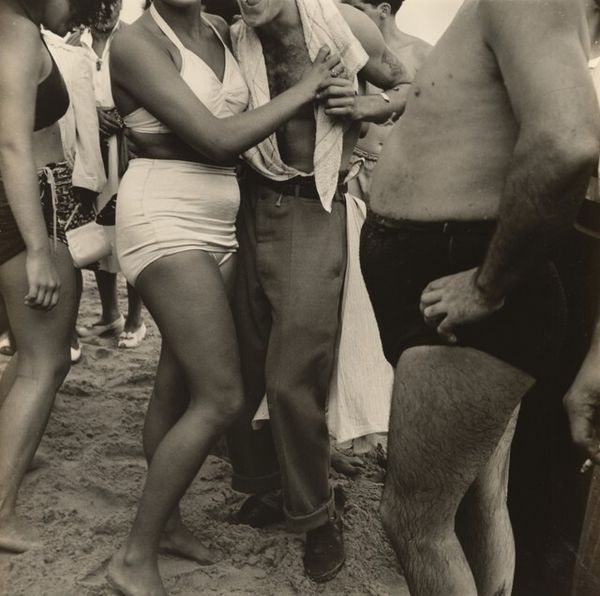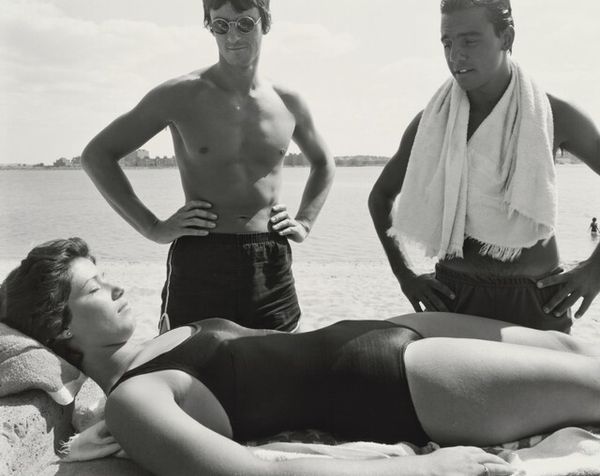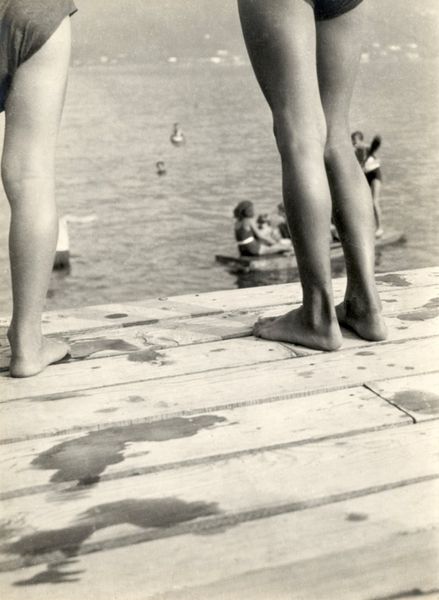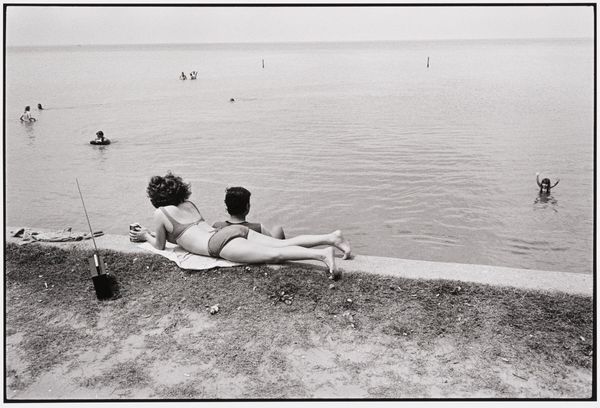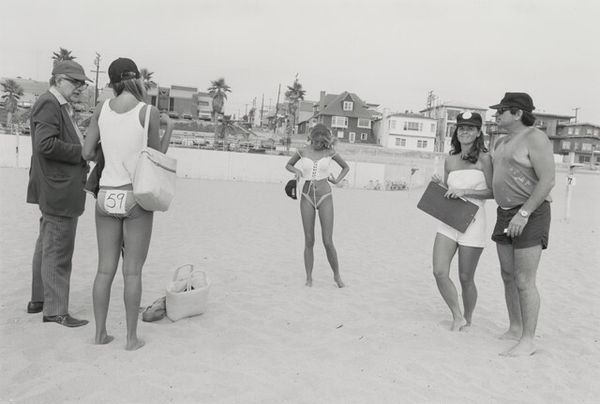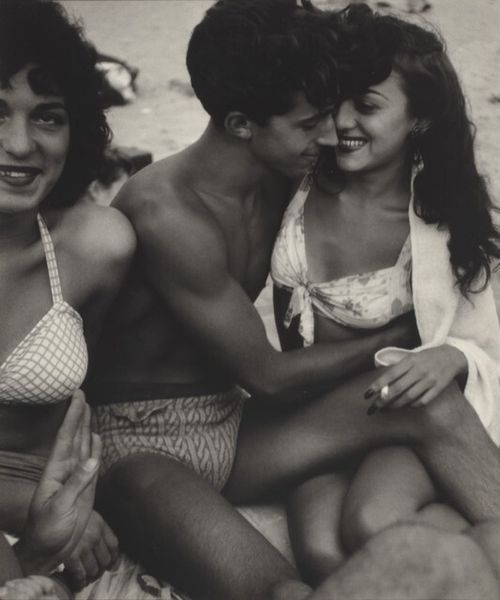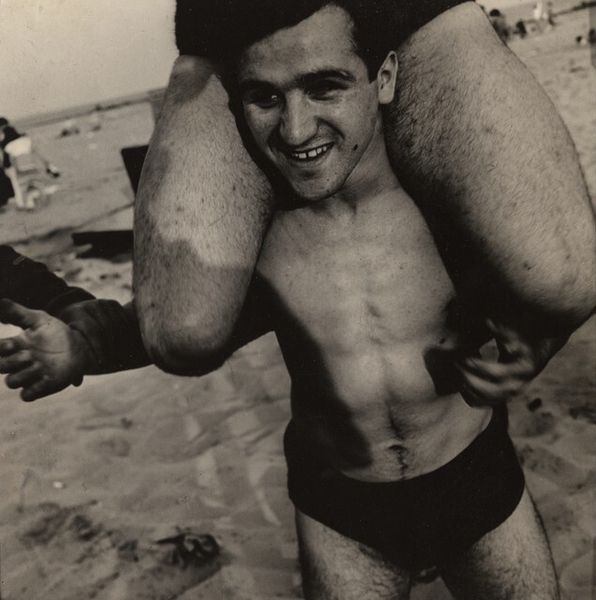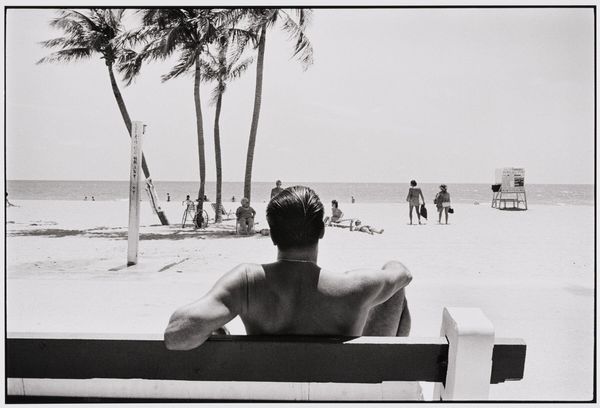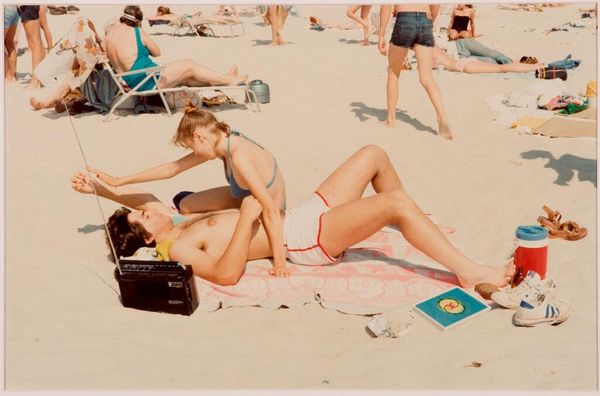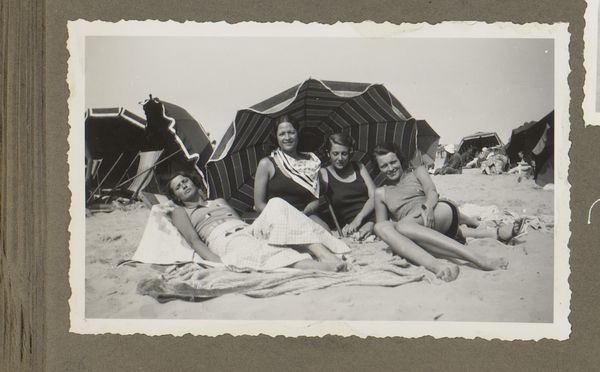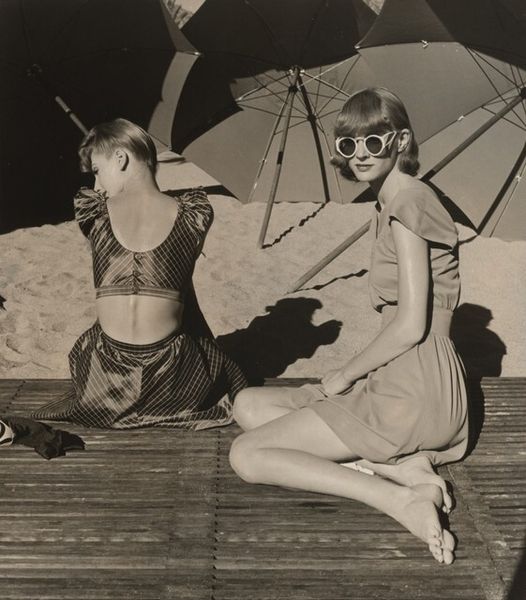
photography, gelatin-silver-print
#
portrait
#
street-photography
#
photography
#
group-portraits
#
gelatin-silver-print
#
monochrome photography
#
realism
#
monochrome
Dimensions: image/sheet/mount: 22.8 × 19.5 cm (9 × 7 11/16 in.)
Copyright: National Gallery of Art: CC0 1.0
Curator: Let’s discuss Sid Grossman’s 1947 gelatin silver print, Coney Island. Editor: Immediately, I'm struck by the composition. The stark contrast of the figures against the neutral sand and sky evokes a sense of theatricality, as though they’re on a stage. Curator: Yes, and the placement of figures, both central and backgrounded, produces interesting symmetries. Notice how Grossman arranges the subjects, creating triangles and visual echoes through their positioning, anchoring the entire scene. Editor: Beyond the aesthetic arrangement, Coney Island, historically, served as a melting pot and accessible escape for working-class New Yorkers. Consider the socio-economic implications of leisure, accessibility and class evident in a public space during the post-war era. Grossman documented those populations with tremendous insight and honesty. Curator: Indeed. It avoids any sentimental gaze; what he does is use sharp focus to highlight both the expressions and the graininess of the print, so, therefore, highlighting materiality as much as representation. Look at the tension between textures—smooth skin, the rough towel, grainy sand. These material qualities are part of its power. Editor: Certainly. This piece also highlights the collective identity born in urban beaches during that period, offering a complex narrative, contrasting staged appearances against more candid displays of social interaction. Curator: To that point, the image resists easy classification because it challenges conventional photographic norms, so it merges spontaneous reportage with constructed, formal devices to engage the viewer into its representational structure. It invites us to question not just what we are seeing but how and why. Editor: Thinking about the audience of the time, this image offered a window into shared public experience but did more; it created a space to acknowledge the diversity, class, and human encounters within a democratized landscape. Curator: In conclusion, I observe how this work’s enduring resonance lies in its formal dynamism but also its intricate understanding of materiality through which Grossman creates visual interest. Editor: And I would add it allows us to reflect on what aspects of public life photography preserves and amplifies—or sometimes obscures.
Comments
No comments
Be the first to comment and join the conversation on the ultimate creative platform.
